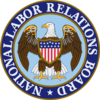About NLRB
Reports
The NLRB offers many reports on the web for public review. Where available, archived versions are also posted.
NLRB Reports
Division of Judges Directory
Bios of individual judges are available by clicking on their name.
Washington, D.C. Office
Phone: 202-501-8800, Fax: 202-501-8686
1015 Half Street SE, Washington, DC 20570-0001
General Counsels Since 1935
| Name | Period of Service | |
|---|---|---|
| From1 | To | |
| Peter S. Ohr15 | 01/25/21 | Present |
| Alice B. Stock14 | 01/20/21 | 01/21/21 |
Peter B.
Board Members Since 1935
| ||

